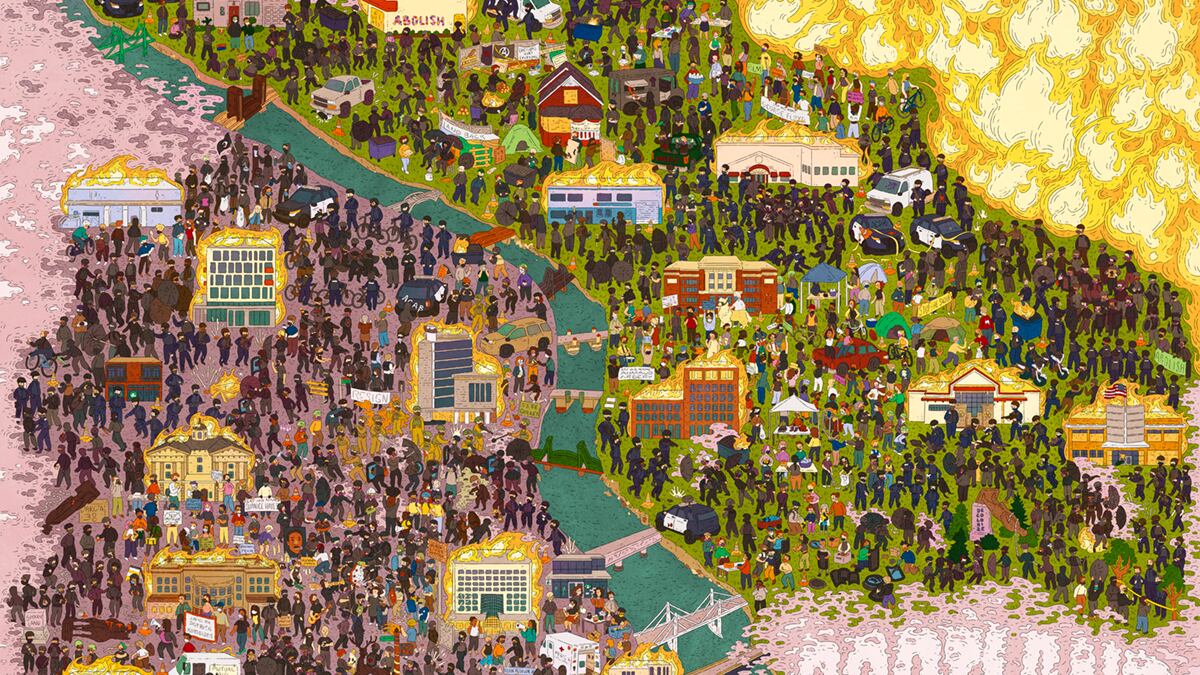From the artist:
“Portland: Year of Protest is an illustrated map through the lens of the local protests between May 2020 and May 2021. The community that formed in Portland around the uprising following the murder of George Floyd has shared a whirlwind of profound moments that have reshaped the way we see the city. Many neighborhoods, intersections and buildings have taken on new associations, as they have become the backdrop for severe trauma and deep comradeship. I created this piece as a means to process and contextualize my own intense memories, as well as accounts by others that have stuck with me. It’s an expression of gratitude to every person who showed up for the struggle, in whatever way they were able to. I hope it helps protesters connect over their shared experiences, and better communicate those experiences to people who weren’t present.” —Luka Grafera
Below, Grafera describes some of the notable individual scenes, in the order in which they occurred:
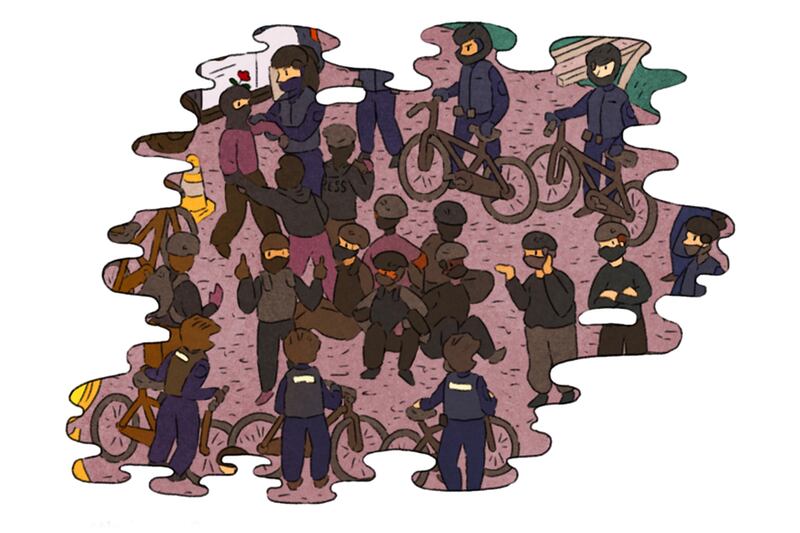
Marches From Revolution Hall
Throughout June, marches originating at Revolution Hall drew crowds of thousands, who traveled along various routes, holding signs, chanting and drumming. Though the marches occasionally concluded downtown where police clashes took place, they more often ended with speeches in parks. On the edges of many marches, teams of bike corkers protected protesters from vehicles at intersections.
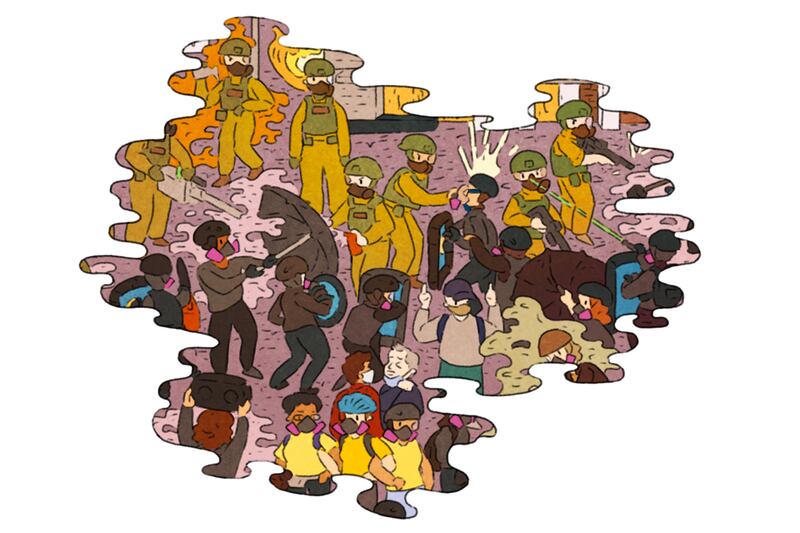
The Fed Wars
Starting in July, federal agencies began to make appearances downtown near the Mark O. Hatfield U.S. Courthouse. Though the first groups of protesters to face off against them were small crowds of dedicated nightly protesters, increasing public awareness of the violence and abductions by federal agents resulted in a massive wave of renewed engagement.
Back the Blue Counterprotest
Tensions between anti-fascist protesters and various white supremacist groups escalated to a brawl in front of the Multnomah County Justice Center on Aug. 22. Hours of intermittent fighting, which featured paintballs, smoke bombs, fireworks, and copious amounts of pepper spray, came to an end when anti-fascists advanced victoriously to push their disjointed adversaries out of the area.
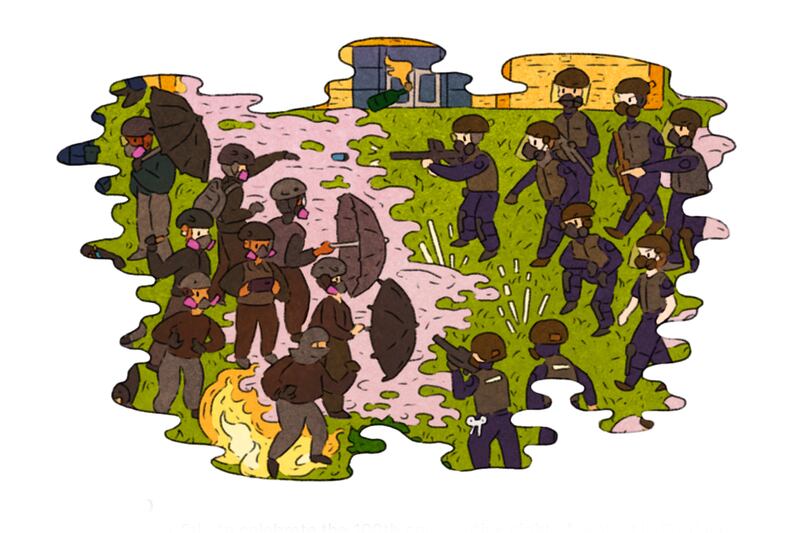
Night 100
On Sept. 5, to celebrate the 100th consecutive night of protest in Portland, protesters gathered for speeches in Ventura Park. When they left to march toward the Portland Police Bureau’s East Precinct, police quickly intervened with tear gas, impact munitions, and violent bull rushes. Protesters responded with fireworks and misthrown Molotov cocktails. By the end of the night, 59 protesters had been arrested.
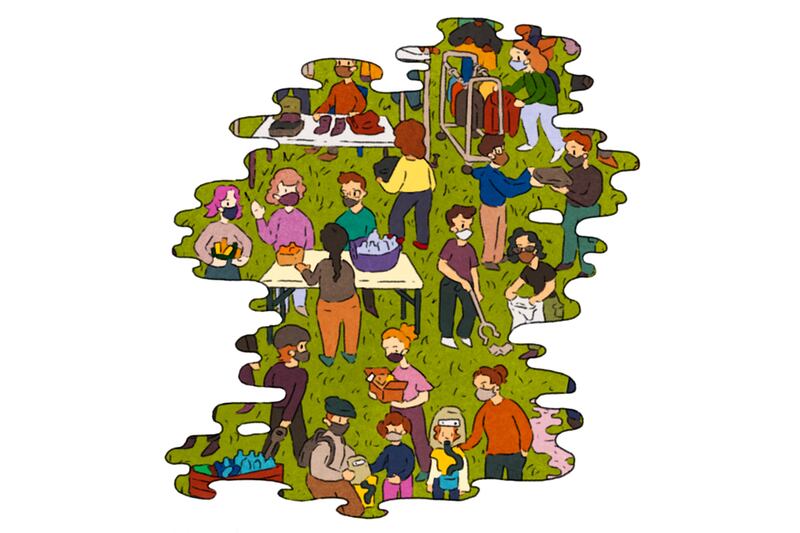
Mutual Aid
Mutual aid networks have been essential to sustaining the protests and beginning to build the kind of world that many protesters are fighting for. Community members came to depend on these groups for food, medical care, protective gear, mechanic work, jail support, firewood, clothing, prescription eyewear, and many other specialties.
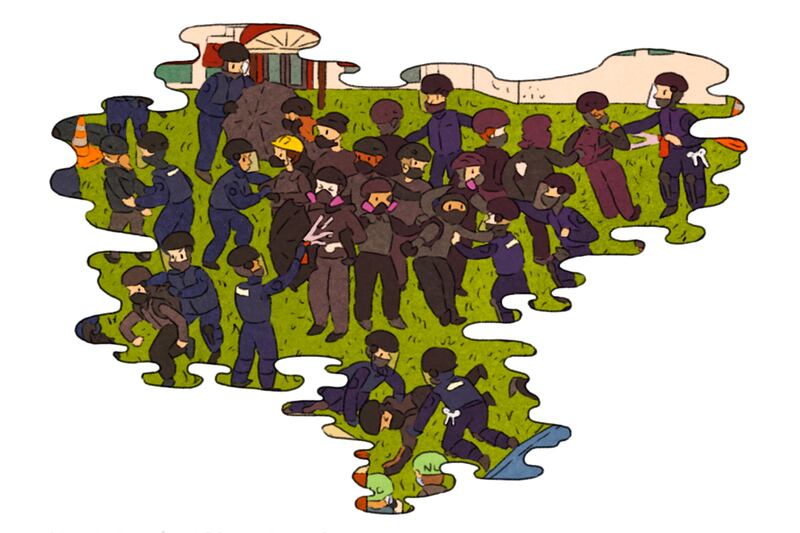
North Precinct Mass Arrest
As crowd numbers began to dwindle and the remaining community became more connected, opportunities emerged for new protest tactics. On Oct. 10, a group coordinated through secret channels to silently march to the North Precinct. Information about the plan was leaked publicly, and police were ready to attack protesters immediately upon their arrival. Members of the group struggled to hold on to each other as they were pepper-sprayed, violently pried apart and arrested.
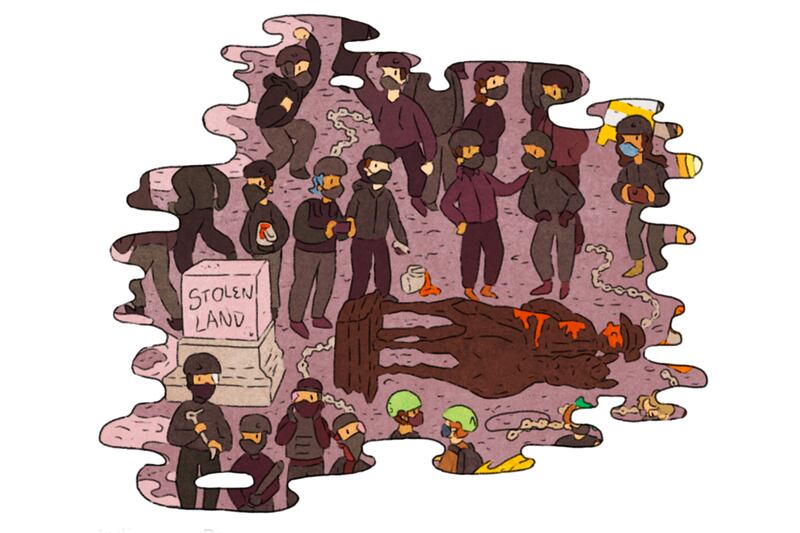
Indigenous Peoples Day of Rage
On the night of Oct. 11, an Indigenous-led march from Waterfront Park to the South Park Blocks culminated in the toppling of two statues. The first, a statue of Theodore Roosevelt, an expansionist who sought to erase Native Americans from their ancestral lands, and the second, a statue of Abraham Lincoln, who signed off on the mass execution of 38 Dakota men.
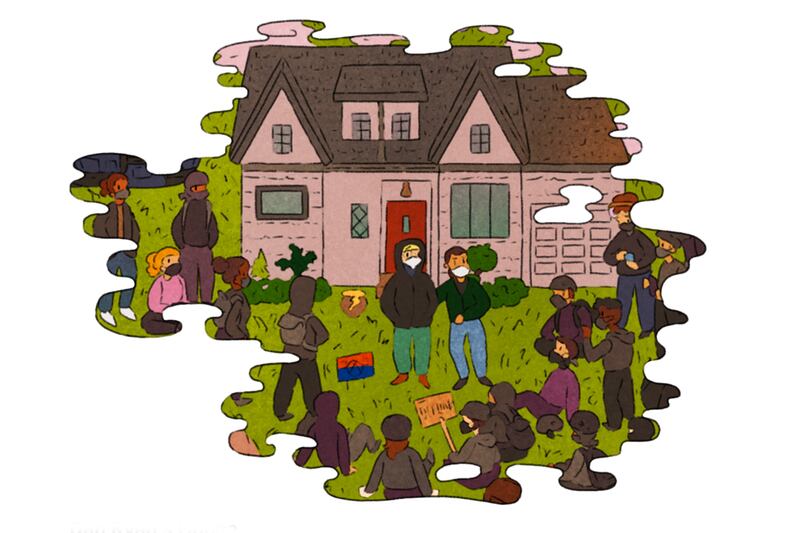
Dan Ryan’s House
On the night of Oct. 27, protesters marched to Portland City Commissioner Dan Ryan’s home to urge him to vote in favor of an $18 million police budget cut. Despite the heartfelt stories that protesters shared with him in support of their pleas for defunding, and a prior stated interest in reallocating police funding to other programs, Commissioner Ryan cast his tie-breaking vote against the cut, prompting subsequent protests at his home.
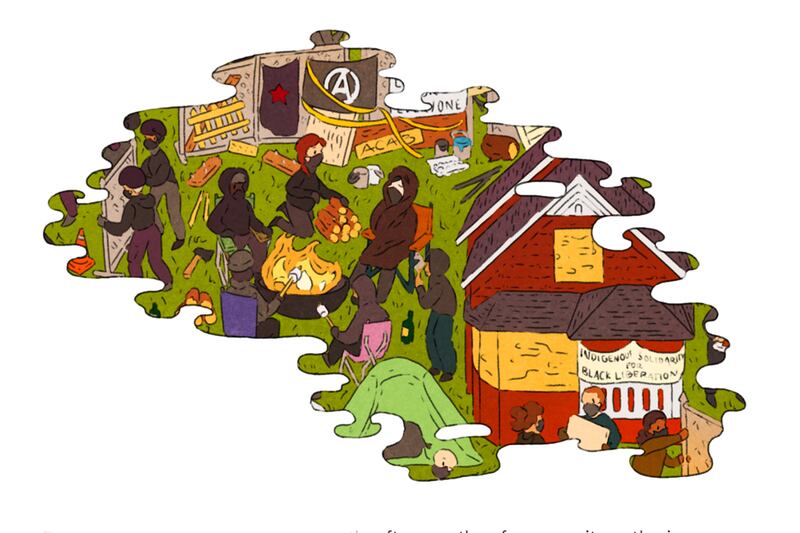
Red House Eviction Defense
Early in the morning on Dec. 8, after months of community gatherings facilitated by the Kinney family to resist their eviction from the Red House, police initiated a long-anticipated raid. Despite several arrests, and efforts to render the Red House uninhabitable, the community responded by constructing their own barricades to defend the home and the surrounding encampment. Protesters occupied the fortifications for several days until a tentative agreement was reached to allow the Kinney family to keep their home.

Kettle in the Pearl
On March 12, a group of over 100 protesters moving through the Pearl District were indiscriminately detained in a kettle by Portland police. Press and legal observers were asked to leave before protesters were singled out to be photographed and identified as a condition of their release. Many resisted and several were ultimately arrested.
To see more of Grafera’s work—and download a coloring book version of Portland: Year of Protest—visit grafera.zone. Archival-quality prints are also available to order at buyolympia.com/Item/luka-grafera-portland-year-of-protest-print.
